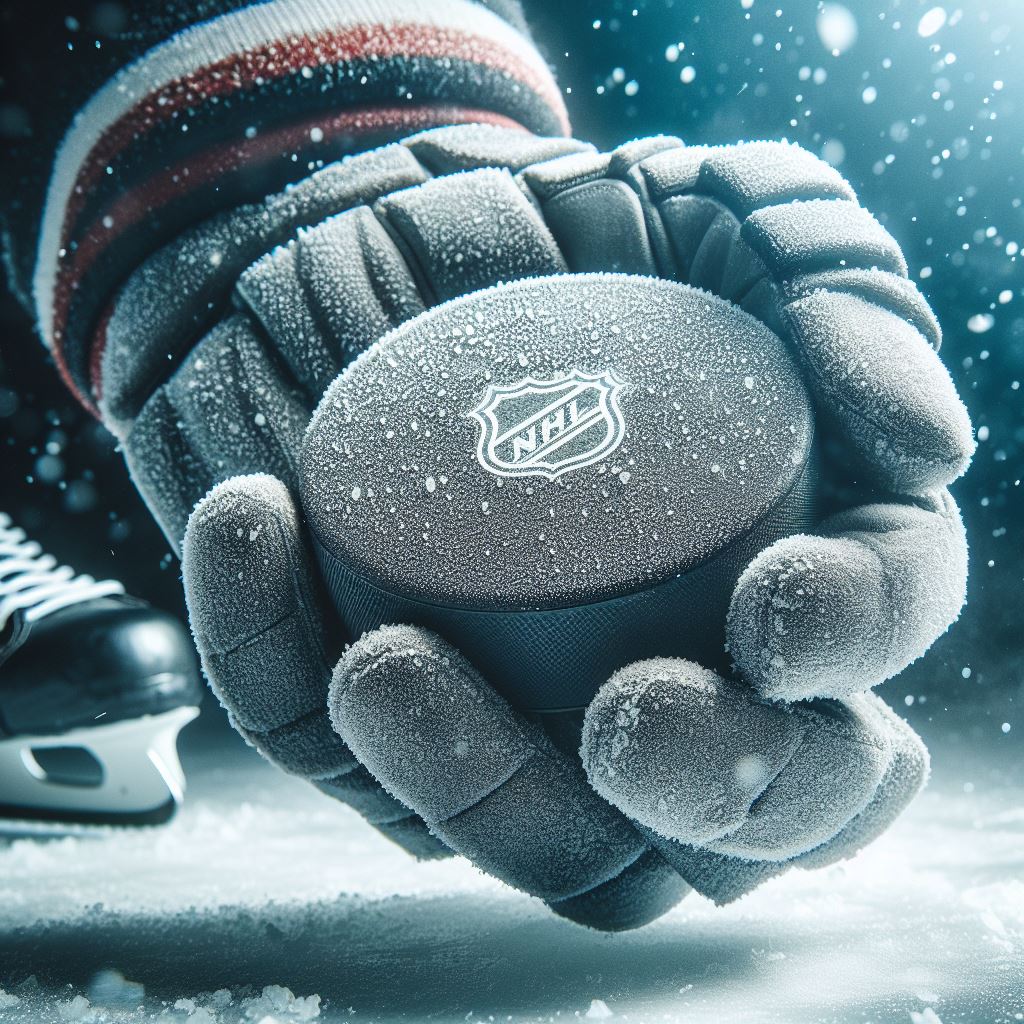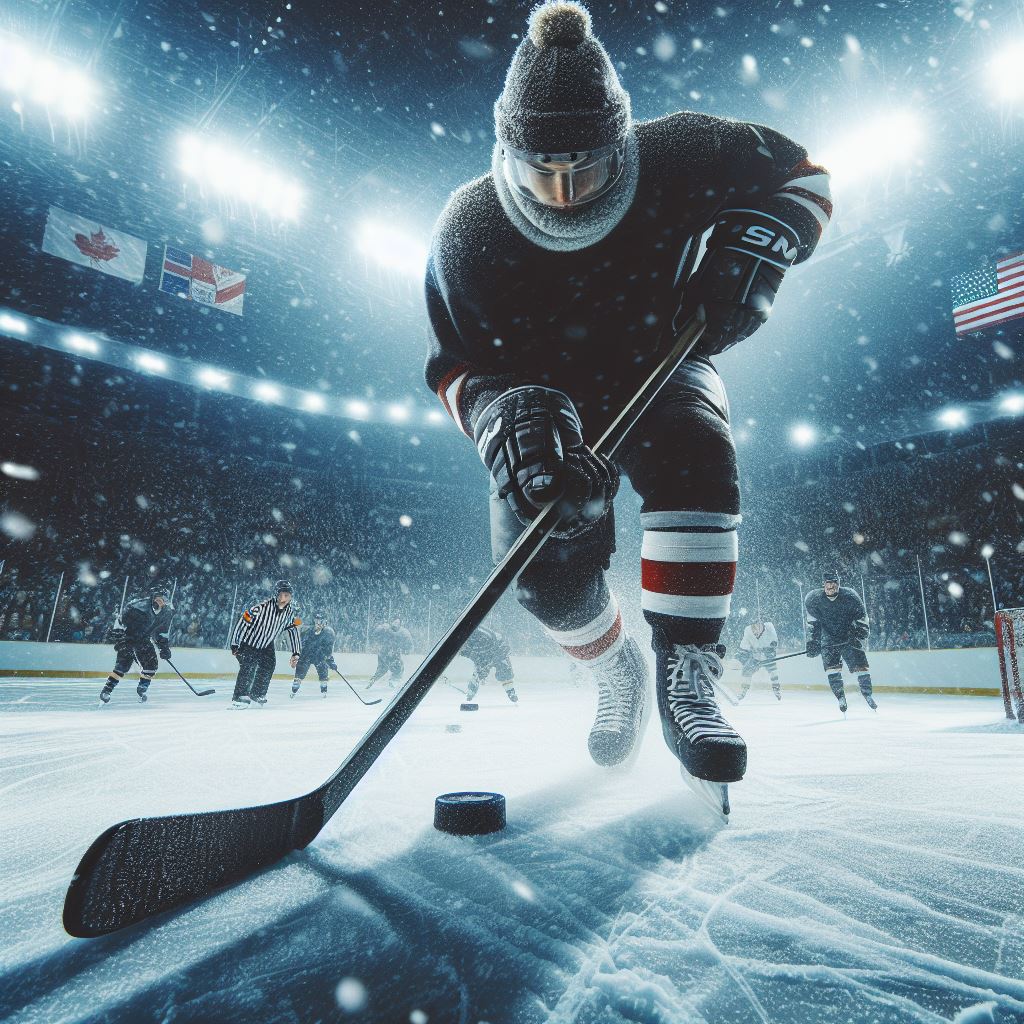Discover the temperature dynamics at hockey games and learn how to stay warm while enjoying the action on the ice. From NHL arenas to local rinks, find out if it is cold at hockey games and how to dress accordingly for optimal comfort.
Introduction
Hockey arenas evoke a chill, but what determines their temperature? Professional venues maintain 60-65°F (15-18°C), while recreational rinks drop lower to around 55°F (12°C), requiring warmer attire for spectators. Factors like arena design, ice maintenance, and crowd size influence this coldness. Nevertheless, strategies like layering clothing and utilizing arena amenities help mitigate discomfort. Understanding these dynamics ensures a pleasant experience for hockey fans, from supporting professionals to cheering on local teams.
Table of Contents
Is It Cold At Hockey Games?
When attending a professional hockey game, expect the arena temperature to range from 60°F (15°C) to 65°F (18°C), making a light jacket or hockey jersey suitable attire for comfort. In contrast, recreational rinks tend to be noticeably colder, often reaching temperatures of 55°F (12°C) or cooler, necessitating heavier clothing options for warmth.
How cold are hockey games? NHL Arena Temperatures
Professional hockey arenas
Professional hockey arenas, as per NHL recommendations, maintain an air temperature range of 60°F (15°C) at the start of the game, with a target temperature of 65°F (18°C) throughout the match. However, due to the freezing point of water at 32°F (0°C), the ice surface itself operates at a cooler temperature, typically ranging between 19 and 21 degrees Fahrenheit at the beginning of a game.

With an increase in attendance, the building’s temperature increases, affecting both the ice and the indoor environment. NHL mandates require that the ice temperature not exceed 24 degrees Fahrenheit by the game’s end. To maintain the integrity of the ice and regulate the building’s temperature, ice technicians use a combination of specialized piping and air conditioning systems.
Impact on Spectators
The temperature control measures taken to maintain the ice quality also influence the comfort of spectators in the stands. During winter months in colder climates such as Edmonton during January where the temperatures outside are frigid, indoor temperature management is relatively unaffected. In areas with extreme heat, such as Arizona in June, where ice melting poses a challenge, arena air conditioning must be intensified to prevent melting.
Personal Experience
A firsthand example illustrates the significance of temperature differences between arenas. The friend’s brother-in-law was accustomed to attending games at Edmonton’s Rogers Arena, which has a comfortable indoor temperature of 60 to 65°F, so attending an Arizona Coyotes game in Phoenix presented an unexpected challenge.
He was unprepared for the warmer climate and arrived in clothing appropriate for cooler temperatures, only to discover that the arena’s air conditioning was intensified to preserve the ice, resulting in a much colder indoor environment than he had expected.
In hockey games, it is important to understand the complex interplay of temperature dynamics between maintaining optimal ice conditions and ensuring spectator comfort. Aside from NHL regulations, temperature management plays a crucial role in improving the overall fan experience.
Factors Contributing to Coldness in Hockey Arena
Hockey games are renowned for their chilly atmospheres, but what exactly contributes to this coldness?
Arena Design and Architecture Affecting Air Circulation
A hockey arena’s architectural design and layout contribute significantly to regulating the temperature inside the arena. Heat distribution efficiency throughout a facility can be influenced by several factors, including ventilation systems, air circulation patterns, and the positioning of entrances and exits. A poorly designed arena may experience uneven temperature distribution, resulting in pockets of cold air in some areas.
Ice Maintenance Procedures and Their Impact on Temperature
Maintaining the ice surface at optimal conditions is crucial for gameplay and spectator comfort. Ice maintenance procedures, such as resurfacing and temperature control, influence the temperature within the arena. A high level of refrigeration systems, for example, can adversely affect the ambient temperature, contributing to colder conditions for spectators.
Influence of Crowd Size and Movement on Temperature Distribution
The size and movement of the crowd also influence the temperature distribution within the arena. As attendance increases, spectators contribute body heat to warming the immediate area. Large crowds, however, can also disrupt airflow and create localized pockets of warmth or coldness, impacting attendees’ overall comfort levels.
Mitigating Coldness in Hockey Arena
While factors contributing to coldness are inevitable, various strategies can help spectators stay warm and comfortable during hockey games.
Strategies for Staying Warm at Hockey Games
During hockey games, it is essential to wear appropriate clothing. Layering clothing, wearing insulated jackets, and wearing accessories such as gloves, scarves, and hats can provide additional warmth. It is important to wear thermal undergarments and moisture-wicking fabrics to maintain heat and control sweat.
Arena Amenities and Services Provided to Counteract Coldness
Several hockey arenas provide amenities to enhance spectator comfort, such as heated seating, blankets, hot beverage concessions, and designated warming areas, among others. The arena staff may also adjust the thermostat setting or distribute hand warmers to alleviate coldness among attendees.
Innovations in Arena Design Aimed at Improving Spectator Comfort
In response to growing concerns about spectator comfort, arena designers are incorporating innovative features to enhance the overall viewing experience. There will be advanced climate control systems integrated, ergonomic seating arrangements will be implemented in spectator areas, and overhead heaters will be installed in the spectator areas. As a result of these design innovations, hockey fans of all ages will be able to enjoy an environment that prioritizes comfort and accessibility.
So, what should you wear to stay warm at a hockey game?
As a means of ensuring warmth and comfort during hockey games, it is recommended to wear a light jacket or hockey sweater. Your attire not only displays your passion for the sport but provides adequate insulation over your regular clothing so that you remain warm during the competition. The indoor temperatures in professional hockey arenas are regulated, therefore heavy coats, gloves, and ski hats are not necessary.
We can provide valuable insight by drawing comparisons to movie theater conditions. Many of us have experienced the experience of entering a theater dressed in summer attire only to find ourselves shivering halfway through. As a result of such experiences, it is wise to adopt a similar approach when attending hockey games.
Wear a hoodie or sweater so you can layer up as necessary to remain comfortable. By following this simple strategy, you will be well prepared to enjoy the game without discomfort.
Recreational Hockey Arena Temperatures and What to Wear
Recreational ice hockey games require a different approach to dressing than professional games. Understanding the colder temperatures and appropriate attire ensures an enjoyable viewing experience for spectators.
Recreational Arena Conditions
In recreational hockey arenas, the temperature generally hovers around 55°F (12°C) or lower, considerably colder than in professional hockey arenas. This colder environment poses challenges to spectators, particularly during extended periods of game viewing.
Recommended Attire
As a precautionary measure, it is advisable to dress warmly in recreational arenas. Wearing a warm jacket, gloves, and a ski hat/toque will provide adequate insulation against the cold. If you will be sitting on cold benches or covering laps during the game, consider bringing a blanket to provide additional warmth.

Challenges of Cold Temperatures
When sitting in temperatures below 50°F for extended periods, the body’s temperature can rapidly drop, resulting in discomfort. However, some arenas offer enclosed seating areas with more comfortable temperatures, which may detract from spectators’ overall experience by disconnecting them from the action on ice.
Overhead Heaters: A Viable Solution
The installation of overhead heaters in the stands of recreational hockey arenas is an optimal solution to combat the cold in these arenas. It is reported that these heaters effectively raise the ambient temperature by 5 to 10 degrees, enhancing spectator comfort and improving the overall viewing experience.
A thoughtful consideration of attire and available amenities is necessary for navigating the colder temperatures of recreational hockey arenas. As spectators support loved ones on the ice, they need to dress appropriately and advocate for enhancements such as overhead heaters to ensure a more enjoyable and comfortable experience.
What happens to the quality of the ice at a hockey arena as the game goes on?
NHL and local ice technicians both place a high priority on maintaining optimal ice quality throughout a hockey game. Nevertheless, maintaining pristine ice conditions at the professional level can be challenging as a result of factors such as increased heat within the arena as compared to recreational facilities. The NHL continues to invest in new technologies to address these issues despite these challenges.
During a game, spectators can observe the quality of the ice by monitoring the behavior of the puck and the players. An excessive bounce or difficulty completing passes is a clear indication that the ice quality has deteriorated. When these observable cues are present, they indicate that the ice may be in a suboptimal state, affecting game flow and precision.
FAQs
How should I dress for a hockey game?
If you’re headed to the hockey rink to cheer on your favorite team, make sure you have a jersey handy to show off your pride. A long-sleeved top worn underneath will add extra protection from cool drafts, and cozy sweats will help keep your bottom half warm while sitting on a chilly metal bench.
How cool is it in a hockey arena?
Generally, the temperature inside an NHL arena hovers around 60 to 65 degrees Fahrenheit. This temperature range is carefully regulated to keep the ice surface in perfect condition for the players while also providing comfort for the spectators.
Do you wear pads in hockey?
Each player is personally responsible for wearing protective equipment for all games, warm-ups, and practices. Such equipment should include gloves, shin pads, shoulder pads, elbow pads, hip pads or padded hockey pants, protective cups, tendon pads plus all head protective equipment as required by USA Hockey rules.
Why hockey is so fun?
Unlike other sports hockey is fast-paced and exciting with end-to-end action. There isn’t a delay between plays like other popular sports. The ice also adds an element of speed unlike any other. Shooting, passing, breakaways, one-timers, big saves – it’s all good!
Conclusion
In conclusion, the temperature dynamics at hockey games are multifaceted, influenced by factors ranging from arena design to ice maintenance procedures. To ensure spectator comfort, it is essential to understand these variables when attending a professional game or supporting local teams at recreational rinks.
By adopting appropriate attire and utilizing arena amenities, fans will be able to navigate the chill and fully enjoy the game. As innovations in arena design continue to evolve, maintaining optimal ice conditions and enhancing spectator comfort remains paramount, improving the overall fan experience for hockey enthusiasts worldwide.
